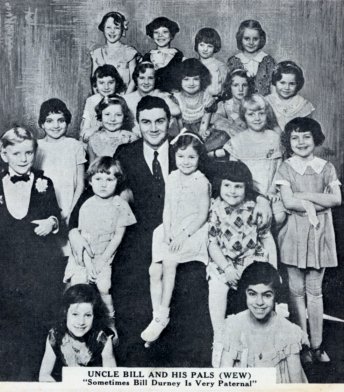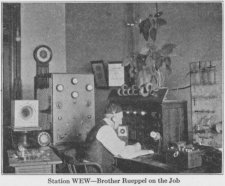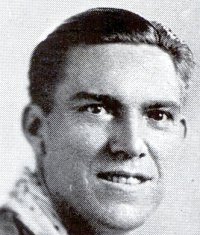Radio Articles
WEW’s Roller Coaster History Began In March, 1922
When it comes to imaginative places for a broadcast studio, WEW has claimed its share: the basement of the owner’s home, the lower level of Busch Stadium, a renovated house in the Soulard neighborhood, a university campus and the front window space of a broadcast tech school.
The station’s original owner was St. Louis University.
WEW officially got its broadcast license (#560) from the federal government on March 23, 1922, although the university claimed the station had actually begun broadcasts of weather information in Morse Code as early as 1912. The station has bounced all over the radio dial, beginning with the identity of 9YK.
When it received its first government license, WEW was at 618.6 kHz, later moving to 833 kHz. In April of 1927 it was assigned to 1210 kHz, and a week later that was changed to 850 kHz. F.C.C. records show that frequency assignment was changed to 760 kHz in 1928 and then the station finally arrived at its present location – 770 kHz – on March 29, 1941.
It has been restricted to daytime operation, meaning it may sign on at sunrise and must cease broadcasting at sunset.
In 1955, KXOK news director Bruce Barrington decided to get into station ownership, purchasing WEW from St. Louis University. He sold the property five years later, but it was in 1964 that Charles Stanley bought it and began to put his indelible mark on the 1,000 watt radio station.
It was Stanley who moved it to different studio locations around the area and brought in the big band nostalgia format. Stanley was known affectionately in the local radio business as “the trade-out king” for his ability to make deals trading station ad time for merchandise instead of cash payments.
It’s been a long time since WEW made such a big splash in the local radio ratings. Current ownership is selling programming by time block, which then allows the buyers/announcers to program whatever they want.
(Reprinted with permission of the St. Louis Journalism Review. Originally published 06/1997)


